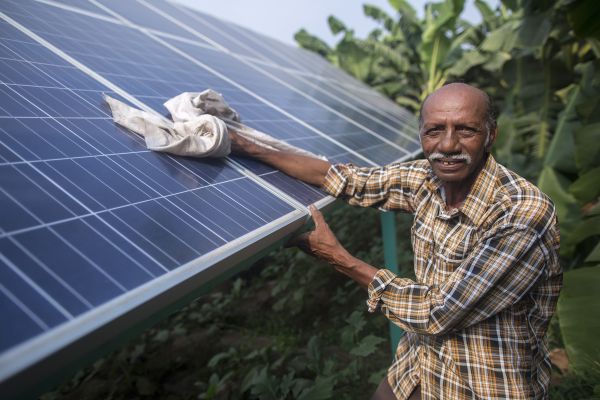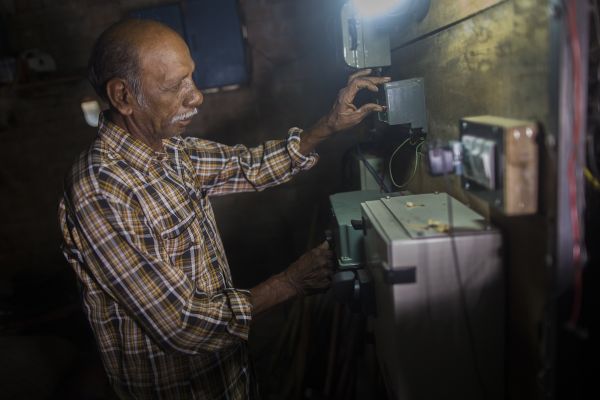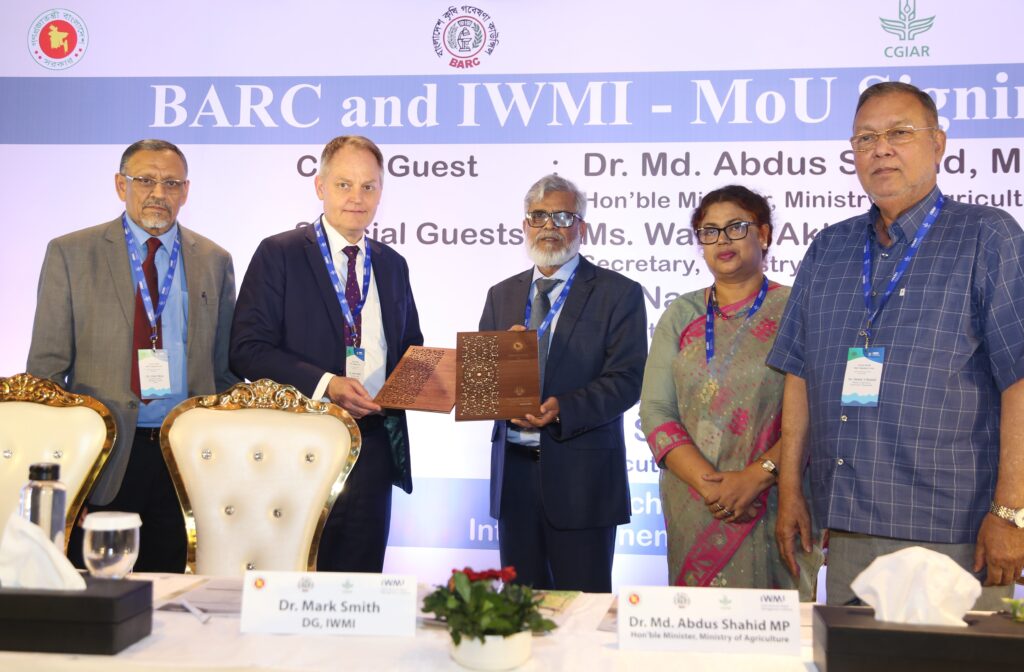Could new scheme conserve water, boost incomes and combat climate change?
A smallholder farmer in India’s arid Gujarat state has started harvesting what could become the country’s most climate-smart cash crop yet – sunshine.

Ramanbhai Parmar, a producer of wheat and banana in Anand district, has become the first farmer to sell energy back to the power grid from the solar panels that drive his water pump.
He will receive his first payment for his “solar crop” today. With up to 3,000 hours of sunlight each year, Gujarat is one of India’s sunniest states. But extended hot, dry spells, and increasingly unpredictable rains mean many farmers are feeling the heat. Vital groundwater reserves are also suffering as farmers take advantage of subsidised energy to pump water for irrigation, often extracting more than they need.
There is a danger that the recent, rapid rise of solar-powered pumps – while providing a cleaner energy source than diesel pumps – could add to the problem because the energy is regarded as free. By giving farmers the opportunity to sell excess electricity generated by their solar pumps, experts hope it will encourage them to pump only the water they need. The buy-back scheme could also protect farm incomes in the event of crop failure, and if adopted widely, help relieve pressure on the state’s overburdened electricity board.
Farmer Parmar will receive 7,500 Indian Rupees (approx. US$120) for 1,500 kWh of electricity generated by his solar panels over four months. If he had used this energy to run his pump instead, he would have extracted an estimated additional 8 million litres of groundwater. Today’s payment to Parmer will be made by the International Water Management Institute (IWMI), which led the pilot study in Gujarat.
“’Solar crops’ are a very exciting example of a triple-win,” said IWMI senior fellow Tushaar Shah. “Farmers, the state, and precious water reserves all benefit from a single intervention.
“We know that India’s farmers are extremely responsive to incentives that improve productivity and incomes. By offering them the chance to sell the electricity generated by their solar-powered water pumps, we could make agriculture in India cleaner and greener.”

The initiative, known as SPaRC (Solar Power as a Remunerative Crop), offers farmers a guaranteed buy-back of the surplus solar power they produce, provided they are connected to the electricity grid. It is monitoring on-farm electricity generation, income, water efficiency and crop production as part of the pilot study.
SPaRC was established by IWMI as part of the CGIAR Research Program on Water, Land and Ecosystems. It is managed by the IWMI-Tata Water Policy Program and supported by Tata Trusts. The CGIAR Research Program on Climate Change, Agriculture and Food Security has pledged additional support for scaling up the pilot.
Nationwide, IWMI estimates around 11 million farmers currently connected to the electricity grid could, in principle, install solar-powered water pumps and sell the surplus energy they produce. Widespread adoption of this approach will depend upon multiple factors, including the commitment of local electricity companies.
Today’s payment to Parmar was made by IWMI.
View the official press release
















